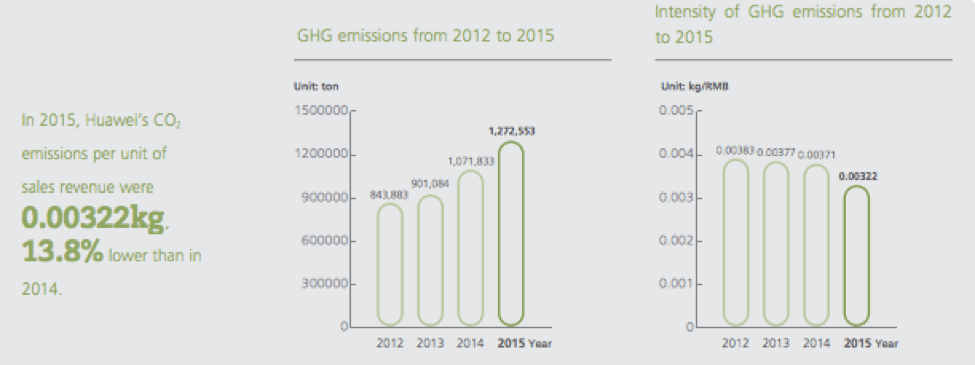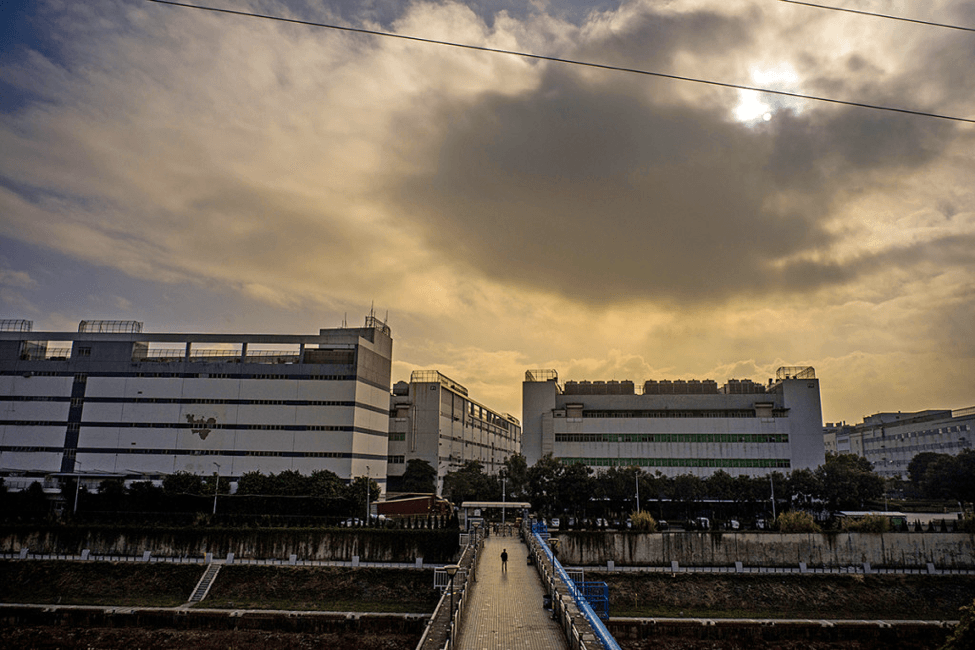Huawei Technologies: at the Crossroad of Sustainability

How should the world's largest telecommunications equipment manufacturer and the third-largest producer of smartphones respond to the domestic government policies on sustainability and greenhouse gas emission peaking by 2030?
“The Yellow Sky”
Huawei Technologies Corporation is a Chinese multinational networking and services company headquartered in Shenzhen, China. A company with 100% private ownership, Huawei is the largest telecommunications equipment manufacturer, and the third-largest producer of smartphones in the world. [1] The largest manufacturing plant of the company is located in Dongguan, more commonly known as the “Foxconn City.” [2] As the name suggests, the Foxconn City is one of the most manufacturing-heavy regions in China, with Foxconn and Huawei being the two leading employers of machinery and assembly line workers. As the area ascended to a global manufacturing center through the first decade of the century, impact of greenhouse gas emissions swept through the greater region. In 2015, the greater Shenzhen Area reported “severe” PM2.5 (air pollutants with 2.5 micrometer level or less) in more than 300 of the 365 days. Yellow fumes became the de facto clouds in the sky (Figure 1).
Figure 1. Gateway to the Foxconn City in Dongguan, China. Foxconn and Huawei are the two leading employers in this global manufacturing center.
China’s Plan for a Low-Carbon Future
In summer 2015, China submitted its Intended Nationally Determined Contribution (INDC) plan to the Secretariat of the United Nations Framework Convention on Climate Change (UNFCCC). [3] The centerpieces of the climate action plan were:
- Reaffirming its commitment to peaking its total greenhouse gas emissions by 2030
- Increasing the share of non-fossil fuels in its energy mix to 20 percent by 2030
- A target to reduce carbon intensity (amount of carbon used per unit GDP) by 60 to 65 percent from 2005 levels
- Restoration of 4.5 billion cubic meters of forested land above 2005 levels
In its 11th Five-Year Plan (covering 2006-2010), the domestic leadership attached significant importance to decoupling its economic growth with the growth in carbon footprint. In the 12th Five-Year Plan (covering 2011-2015), a series of “climate programs” were concretely defined, including carbon pricing, low-carbon cities, and cap-and-trade programs. [4]
Huawei at the Crossroad of Sustainability
The 2030 peaking goal and the 60 percent target for carbon intensity reduction set by the government posed an unprecedented challenge to Huawei and the other previous carbon “free riders” in the manufacturing sector. In 2008, mainstream domestic media, including the central news agency, started to investigate into the adverse and heavily polluted working conditions of Huawei’s plant in Foxconn City, and highlighted the company’s outdated infrastructure and sluggish adaptation in response to the rallying calls for sustainability from the government.
Huawei responded to the domestic sustainability policies and media coverage in multitude of dimensions. In 2008, the company announced the incorporation of sustainability into its core strategic pillars and mission. The Huawei Sustainability Report inaugurated in the same year, with an annual report to follow in each subsequent year. [5] As part of the corporate-wide Initiative for Sustainable Operations, sustainability requirements were built into the company’s procurement strategies, manufacturing processes, and supplier management. The most recent Sustainability Report in 2015 highlighted the following measures to align the corporate strategy with the sustainability commitments and policies of the government. [6]
- Establishment of in-house solar power stations, reducing CO2 emissions by 18,000 tons at the time of the 2015 report
- Adoption of green building concepts encompassing site selection, energy conservation, water conservation, and material utilization. One pilot green building received the Gold level of the US Leadership in Energy and Environmental Design (LEED) certification
- Establishment of a Greenhouse gas (GHG) management division that used ISO14064 standard to identify GHG emissions, targeting a 10 percent reduction in GHG emission intensity (emissions per unit of revenue) compared to 2012 (Figure 2)
- Manufacturing-based carbon emission reduction by 9,011 tons in 2015, attributable to technological improvement, refined product packaging, redesigned logistics and transportation systems, among other approaches

Figure 2. Huawei’s greenhouse gas emissions and emission intensity records from 2012 to 2015.
Looking into a Sustainable Future
Looking forward, there are several opportunities and actions recommended for Huawei to further refine its business and operation models for climate change and sustainability.
In addition to its manufacturing business, Huawei is at heart a networking and telecommunications company. The first opportunity therefore extends beyond the scope of manufacturing-based sustainability. More specifically, networking energy consumption is expected to grow with increased connections and bandwidth. Given the company’s recent expansion into other emerging markets, it is mission-critical to design energy-efficient networking and networking-ancillary products to decouple the inevitable growth in connectivity with the increased toll on the climate.
The second opportunity is centered around training and education for operational compliance. Providing employees and contractors with the necessary training and education is crucial for goal alignment and for the full execution of the still-nascent sustainable operation structure throughout the company.
(780 words)
Sources
[1] http://www.huawei.com/us/about-huawei/corporate-info/index.htm
[3] ENHANCED ACTIONS ON CLIMATE CHANGE: CHINA’ S INTENDED NATIONALLY DETERMINED CONTRIBUTIONS submitted to the Secretariat of the United Nations Framework Convention on Climate Change (UNFCCC) (pdf)
[4] http://climatenexus.org/learn/international-actions/chinas-climate-and-energy-policy
[5] http://www.huawei.com/en/sustainability/sustainability-report
[6] Huawei Sustainability Report, 2015 (pdf)
Image Sources
Figure 1: https://www.wired.com/2015/04/inside-chinese-factories/
Figure 2: Huawei Sustainability Report, 2015 (pdf)




I used to design solutions with Huawei components incorporated (although we were primarily a Cisco-shop) and I was unaware of the company’s lofty environmental impact. The yellow fumes outside their HQ are particularly ominous. There is clearly a need for new operational and manufacturing practices.
I would expect as software-defined networking becomes more prevalent, some of Huawei’s energy impact could mitigated. However, one thing worries me above others; the Internet of Things. The IoT revolution is likely to demand much greater bandwidth usage in the home, with an anticipated 50+ connected devices in every household by 2020. This will place significant strain of routing and switching devices, which in turn will emit considerable amounts of energy.
Therefore, I agree entirely that Huawei’s sustainability priorities should not focus only on manufacturing, but on the energy consumption of their products, because it is those that will likely have a much larger impact on our global climate.